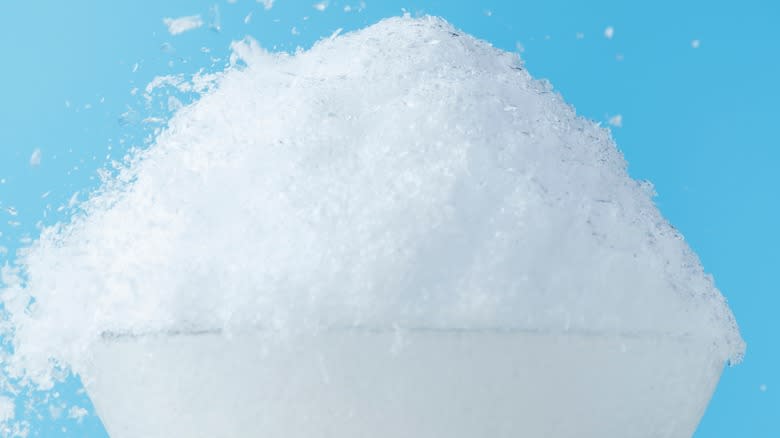Is It Actually Safe To Eat Ice Cream Made From Snow?

If you grew up in the Appalachian region of the United States, you might be familiar with snow cream: Ice cream made from fresh fallen snow. All you need to make snow cream is fresh snow, sweetened condensed milk, and the toppings of your choice. Sounds simple enough right? But the real difficulty in this recipe comes from making your snow cream as safely as possible. After all, snow has the chance to collect a wide array of pollutants as it falls, including nitrates, mercury, dust, and sulfur.
If you grew up eating snow, and reading that list of pollutants gave you a mini panic attack, don't worry. Staci Simonich, an Oregon State University professor of environmental and toxic ecology, told NPR in an interview that she "... would not hesitate for my children to have the joy of eating a handful of freshly fallen snow from my backyard. ... Because the pesticide concentrations are low... So the one-time dose is very low and not a risk to health." Additionally, there are measures you can take to ensure the snow you are eating contains lower amounts of these potentially harmful substances.
Read more: What Happens If You Accidentally Eat Mold?
How To Safely Eat Fresh Snow

If you want to eat snow there are a few things to keep in mind. One of the easiest ways to ensure the snow you're eating contains less pollutants, you wait for the first snowflakes to land and then collect the later ones. Those first snowflakes will collect more of the harmful substances in the air as they fall, leaving less behind for the second round of snow. While you don't want to eat the first snow that falls, you also don't want to wait to collect it off the ground a day later. The sweet spot is to let some snow accumulate on the ground first, then go out with a bowl that can keep the snow cold and either collect the top layer of snow or catch it as it falls.
You'll also want to be mindful of your location. Snowfall in larger cities or suburbs is going to be dirtier than snow out in the country. The best place to collect snow to eat is going to be areas that are as untouched by people as possible. You should never eat snow that has visible dirt or impurities, or that comes from unsanitary surfaces. As a general rule of thumb, if you're unsure about how clean the area you're getting your snow from is, you probably shouldn't eat the snow from there. Keeping these rules in mind, you can now safely look forward to inclement weather for making snow cream.
Read the original article on Tasting Table.

